
Thomas Cole Painting Reproductions 2 of 3
1801-1848
English Hudson River School Painter
Thomas Cole, recognized in his day as a leading figure of American landscape painting, was born on February 1, 1801, in Bolton-le-Moor, England. His formative years were marked by practical experience rather than formal instruction - as a youth he served first as an engraver’s assistant, then as an apprentice to a calico-print designer. In these early positions, he became acquainted with the nuances of craft and design, an introduction that would later inform his sensitive treatment of natural forms. In 1818, he emigrated with his family to the United States, initially spending time in Philadelphia before joining them in Steubenville, Ohio, in 1819.
While in Ohio, Cole encountered an itinerant portrait painter named Stein who guided his first ventures into oil painting. Though this mentorship was brief, it proved foundational, kindling Cole’s ambition to observe nature closely and replicate it with fidelity. His inclination to capture the distinctive traits of living foliage took further shape in Pittsburgh in 1823, where he made his earliest recorded attempts at drawing directly from nature. Sketching branches and trees with noticeable precision, he revealed a curiosity about both the aesthetics and emotional resonance of the landscape.
In 1825 Cole moved to New York, where he embarked on an extended tour along the Hudson River and the Catskill Mountains. The sketches and paintings he produced during this period displayed a remarkable understanding of atmospheric qualities and a willingness to explore the grandeur of the American scenery. Later that same year, three of his landscapes were noticed and purchased by prominent figures - John Trumbull, William Dunlap, and Asher B. Durand. This recognition signaled Cole’s entrance into a lively cultural scene. By January 1826, he was elected a founding member of the National Academy of Design and began receiving commissions from discerning patrons such as Daniel Wadsworth and Robert Gilmor, Jr.
Despite the commercial success of these American landscapes, Cole longed to produce a “higher style of landscape” that could embrace moral and religious themes. His initial attempts in this more elevated register garnered mixed responses and prompted a decision to study abroad. In June 1829 he sailed for England, where he examined the works of Old Masters and conferred with leading artists Joseph Mallord William Turner and John Constable. Subsequent travels in France and Italy left a deep impression, particularly the landscapes of Rome and Florence, where he conceived of a multi-part series illustrating the arc of a civilization’s rise and fall.
This idea finally bore fruit upon Cole’s return to the United States in 1832, when he convinced Luman Reed to sponsor what became "The Course of Empire." Completed in 1836, these five canvases were well-received, presenting a reflection on the transience of human achievement. The same period saw him producing imaginative works such as "The Departure" and "The Return," as well as two versions of "The Voyage of Life." His capacity to interweave narrative allegory with elements of carefully observed landscape set his work apart from more conventional depictions of the American wilderness.
In 1836 he married Maria Barstow and settled in Catskill, New York. There, he remained closely engaged with the surrounding natural environment, continuing to paint vistas of the Hudson and the Catskill Mountains. This same year, he published “Essay on American Scenery,” articulating his profound convictions about the spiritual and national significance of the American landscape. The essay conveys his belief that nature possesses an intrinsic capacity to elevate the human spirit, a sentiment subtly interlaced through his larger compositions.
A second European sojourn took place in 1841, during which Cole traveled extensively in Italy. The landscapes of Sicily, including the imposing Mt. Etna, left their mark on him, resulting in several paintings that captured the island’s unique atmosphere. Upon returning to Catskill in 1842, he accepted the young Frederic Edwin Church as a pupil, a mentorship of some consequence for the future of American landscape painting. By the mid-1840s, Cole was producing works noteworthy for a heightened attention to light and atmosphere, although he also labored on a new ambitious series, "The Cross and the World," which was never completed.
His death on February 11, 1848, at the age of forty-seven, brought forth considerable tributes and a memorial exhibition in New York. His influence upon younger painters was both immediate and long-lasting, seen most directly in the art of Jasper F. Cropsey and Church. Though Thomas Cole’s career was cut short, his explorations of the American wilderness - and the philosophical, moral weight he attributed to it - established a lasting precedent for how landscape was conceived and depicted in the cultural imagination of the United States. His legacy continues to resonate in the quieter corners of the Catskills, where one still senses the fervent devotion with which he observed every tree, mountain, and passing cloud.
While in Ohio, Cole encountered an itinerant portrait painter named Stein who guided his first ventures into oil painting. Though this mentorship was brief, it proved foundational, kindling Cole’s ambition to observe nature closely and replicate it with fidelity. His inclination to capture the distinctive traits of living foliage took further shape in Pittsburgh in 1823, where he made his earliest recorded attempts at drawing directly from nature. Sketching branches and trees with noticeable precision, he revealed a curiosity about both the aesthetics and emotional resonance of the landscape.
In 1825 Cole moved to New York, where he embarked on an extended tour along the Hudson River and the Catskill Mountains. The sketches and paintings he produced during this period displayed a remarkable understanding of atmospheric qualities and a willingness to explore the grandeur of the American scenery. Later that same year, three of his landscapes were noticed and purchased by prominent figures - John Trumbull, William Dunlap, and Asher B. Durand. This recognition signaled Cole’s entrance into a lively cultural scene. By January 1826, he was elected a founding member of the National Academy of Design and began receiving commissions from discerning patrons such as Daniel Wadsworth and Robert Gilmor, Jr.
Despite the commercial success of these American landscapes, Cole longed to produce a “higher style of landscape” that could embrace moral and religious themes. His initial attempts in this more elevated register garnered mixed responses and prompted a decision to study abroad. In June 1829 he sailed for England, where he examined the works of Old Masters and conferred with leading artists Joseph Mallord William Turner and John Constable. Subsequent travels in France and Italy left a deep impression, particularly the landscapes of Rome and Florence, where he conceived of a multi-part series illustrating the arc of a civilization’s rise and fall.
This idea finally bore fruit upon Cole’s return to the United States in 1832, when he convinced Luman Reed to sponsor what became "The Course of Empire." Completed in 1836, these five canvases were well-received, presenting a reflection on the transience of human achievement. The same period saw him producing imaginative works such as "The Departure" and "The Return," as well as two versions of "The Voyage of Life." His capacity to interweave narrative allegory with elements of carefully observed landscape set his work apart from more conventional depictions of the American wilderness.
In 1836 he married Maria Barstow and settled in Catskill, New York. There, he remained closely engaged with the surrounding natural environment, continuing to paint vistas of the Hudson and the Catskill Mountains. This same year, he published “Essay on American Scenery,” articulating his profound convictions about the spiritual and national significance of the American landscape. The essay conveys his belief that nature possesses an intrinsic capacity to elevate the human spirit, a sentiment subtly interlaced through his larger compositions.
A second European sojourn took place in 1841, during which Cole traveled extensively in Italy. The landscapes of Sicily, including the imposing Mt. Etna, left their mark on him, resulting in several paintings that captured the island’s unique atmosphere. Upon returning to Catskill in 1842, he accepted the young Frederic Edwin Church as a pupil, a mentorship of some consequence for the future of American landscape painting. By the mid-1840s, Cole was producing works noteworthy for a heightened attention to light and atmosphere, although he also labored on a new ambitious series, "The Cross and the World," which was never completed.
His death on February 11, 1848, at the age of forty-seven, brought forth considerable tributes and a memorial exhibition in New York. His influence upon younger painters was both immediate and long-lasting, seen most directly in the art of Jasper F. Cropsey and Church. Though Thomas Cole’s career was cut short, his explorations of the American wilderness - and the philosophical, moral weight he attributed to it - established a lasting precedent for how landscape was conceived and depicted in the cultural imagination of the United States. His legacy continues to resonate in the quieter corners of the Catskills, where one still senses the fervent devotion with which he observed every tree, mountain, and passing cloud.
68 Thomas Cole Paintings
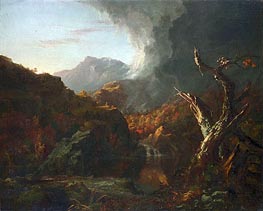
Landscape with Tree Trunks 1828
Oil Painting
$1451
$1451
Canvas Print
$66.22
$66.22
SKU: CTH-12258
Thomas Cole
Original Size: 66.6 x 82 cm
Rhode Island Museum of Art, Providence, USA
Thomas Cole
Original Size: 66.6 x 82 cm
Rhode Island Museum of Art, Providence, USA
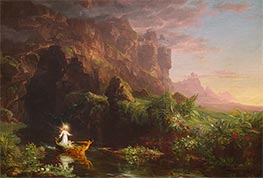
Voyage of Life - Childhood 1842
Oil Painting
$2817
$2817
Canvas Print
$55.84
$55.84
SKU: CTH-12259
Thomas Cole
Original Size: 134.3 x 195.3 cm
National Gallery of Art, Washington, USA
Thomas Cole
Original Size: 134.3 x 195.3 cm
National Gallery of Art, Washington, USA
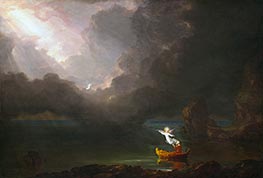
Voyage of Life - Old Age 1842
Oil Painting
$1539
$1539
Canvas Print
$55.84
$55.84
SKU: CTH-12260
Thomas Cole
Original Size: 133.4 x 196.2 cm
National Gallery of Art, Washington, USA
Thomas Cole
Original Size: 133.4 x 196.2 cm
National Gallery of Art, Washington, USA

Voyage of Life - Manhood 1842
Oil Painting
$2471
$2471
Canvas Print
$54.62
$54.62
SKU: CTH-12261
Thomas Cole
Original Size: 134.3 x 202.6 cm
National Gallery of Art, Washington, USA
Thomas Cole
Original Size: 134.3 x 202.6 cm
National Gallery of Art, Washington, USA

Voyage of Life - Youth 1842
Oil Painting
$4493
$4493
Canvas Print
$56.59
$56.59
SKU: CTH-12262
Thomas Cole
Original Size: 134.3 x 195 cm
National Gallery of Art, Washington, USA
Thomas Cole
Original Size: 134.3 x 195 cm
National Gallery of Art, Washington, USA
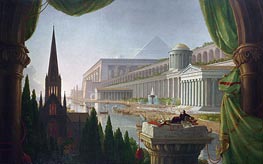
The Architect's Dream 1840
Oil Painting
$2874
$2874
Canvas Print
$86.26
$86.26
SKU: CTH-12263
Thomas Cole
Original Size: 137 x 213.3 cm
Toledo Museum of Art, Ohio, USA
Thomas Cole
Original Size: 137 x 213.3 cm
Toledo Museum of Art, Ohio, USA

Course of Empire - Destruction 1836
Canvas Print
$54.62
$54.62
SKU: CTH-12264
Thomas Cole
Original Size: 97.8 x 158.7 cm
Historical Society, New York, USA
Thomas Cole
Original Size: 97.8 x 158.7 cm
Historical Society, New York, USA
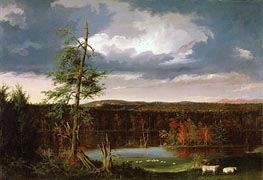
Landscape, the Seat of Mr. Featherstonhaugh in ... 1826
Oil Painting
$1763
$1763
Canvas Print
$56.74
$56.74
SKU: CTH-12265
Thomas Cole
Original Size: 83.8 x 121.9 cm
Philadelphia Museum of Art, Pennsylvania, USA
Thomas Cole
Original Size: 83.8 x 121.9 cm
Philadelphia Museum of Art, Pennsylvania, USA

Catskill Scenery c.1833
Oil Painting
$1671
$1671
Canvas Print
$103.94
$103.94
SKU: CTH-12266
Thomas Cole
Original Size: 62.2 x 82.2 cm
Saint Louis Art Museum, Missouri, USA
Thomas Cole
Original Size: 62.2 x 82.2 cm
Saint Louis Art Museum, Missouri, USA
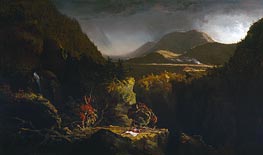
Landscape with Figures (The Last of the Mohicans) 1826
Oil Painting
$1928
$1928
Canvas Print
$81.21
$81.21
SKU: CTH-12267
Thomas Cole
Original Size: 66.4 x 109.4 cm
Terra Museum of American Art, Chicago, USA
Thomas Cole
Original Size: 66.4 x 109.4 cm
Terra Museum of American Art, Chicago, USA

North Mountain and Catskill Creek 1838
Oil Painting
$1602
$1602
Canvas Print
$98.70
$98.70
SKU: CTH-12268
Thomas Cole
Original Size: 67.2 x 92.6 cm
Yale University Art Gallery, Connecticut, USA
Thomas Cole
Original Size: 67.2 x 92.6 cm
Yale University Art Gallery, Connecticut, USA
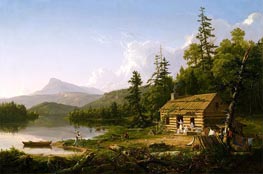
Home in the Woods 1847
Oil Painting
$3506
$3506
Canvas Print
$54.64
$54.64
SKU: CTH-16887
Thomas Cole
Original Size: 133.4 x 189.2 cm
Reynolda House Museum of American Art, North Carolina, USA
Thomas Cole
Original Size: 133.4 x 189.2 cm
Reynolda House Museum of American Art, North Carolina, USA
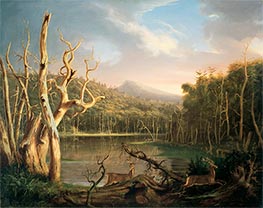
Lake with Dead Trees (Catskill) 1825
Oil Painting
$1227
$1227
Canvas Print
$65.33
$65.33
SKU: CTH-19105
Thomas Cole
Original Size: 68.5 x 83.8 cm
Allen Memorial Art Museum at Oberlin College, Ohio, USA
Thomas Cole
Original Size: 68.5 x 83.8 cm
Allen Memorial Art Museum at Oberlin College, Ohio, USA
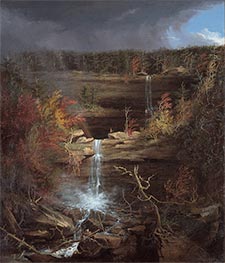
Falls of the Kaaterskill 1826
Oil Painting
$1411
$1411
Canvas Print
$70.74
$70.74
SKU: CTH-19106
Thomas Cole
Original Size: 109.2 x 91.4 cm
Westervelt Warner Museum of American Art, Alabama, USA
Thomas Cole
Original Size: 109.2 x 91.4 cm
Westervelt Warner Museum of American Art, Alabama, USA
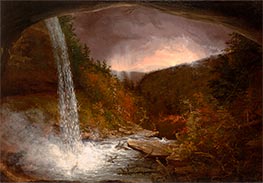
Kaaterskill Falls 1826
Oil Painting
$1171
$1171
Canvas Print
$57.49
$57.49
SKU: CTH-19107
Thomas Cole
Original Size: 63.5 x 89.7 cm
Westervelt Warner Museum of American Art, Alabama, USA
Thomas Cole
Original Size: 63.5 x 89.7 cm
Westervelt Warner Museum of American Art, Alabama, USA
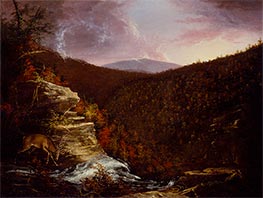
From the Top of Kaaterskill Falls 1826
Oil Painting
$1279
$1279
Canvas Print
$62.32
$62.32
SKU: CTH-19108
Thomas Cole
Original Size: 79 x 104.5 cm
Detroit Institute of Arts, Michigan, USA
Thomas Cole
Original Size: 79 x 104.5 cm
Detroit Institute of Arts, Michigan, USA

Sunrise in the Catskills 1826
Oil Painting
$1204
$1204
Canvas Print
$59.45
$59.45
SKU: CTH-19109
Thomas Cole
Original Size: 63.5 x 89 cm
National Gallery of Art, Washington, USA
Thomas Cole
Original Size: 63.5 x 89 cm
National Gallery of Art, Washington, USA
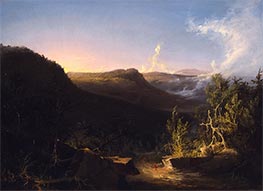
Catskills Mountain Landscape c.1826
Oil Painting
$978
$978
Canvas Print
$60.06
$60.06
SKU: CTH-19110
Thomas Cole
Original Size: 40.3 x 55.5 cm
Public Collection
Thomas Cole
Original Size: 40.3 x 55.5 cm
Public Collection

Storm King of the Hudson c.1825/27
Oil Painting
$998
$998
Canvas Print
$60.35
$60.35
SKU: CTH-19111
Thomas Cole
Original Size: 58.4 x 78.7 cm
Ball State University Museum of Art, Indiana, USA
Thomas Cole
Original Size: 58.4 x 78.7 cm
Ball State University Museum of Art, Indiana, USA
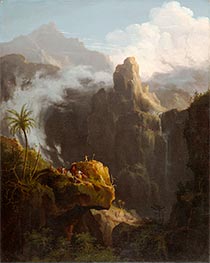
Landscape Composition, St. John in the Wilderness 1827
Oil Painting
$1665
$1665
Canvas Print
$66.07
$66.07
SKU: CTH-19112
Thomas Cole
Original Size: 91.4 x 73.5 cm
Wadsworth Atheneum, Hartford, USA
Thomas Cole
Original Size: 91.4 x 73.5 cm
Wadsworth Atheneum, Hartford, USA
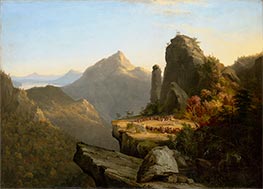
Scene from'The Last of the Mohicans', Cora ... 1827
Oil Painting
$1637
$1637
Canvas Print
$59.45
$59.45
SKU: CTH-19113
Thomas Cole
Original Size: 64.4 x 89 cm
Wadsworth Atheneum, Hartford, USA
Thomas Cole
Original Size: 64.4 x 89 cm
Wadsworth Atheneum, Hartford, USA
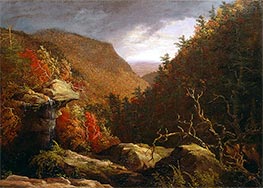
The Clove, Catskills 1827
Oil Painting
$1293
$1293
Canvas Print
$59.00
$59.00
SKU: CTH-19114
Thomas Cole
Original Size: 63.5 x 89.2 cm
New Britain Museum of American Art, Connecticut, USA
Thomas Cole
Original Size: 63.5 x 89.2 cm
New Britain Museum of American Art, Connecticut, USA
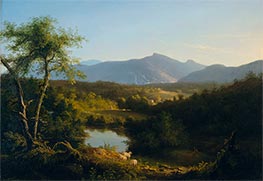
View Near the Village of Catskill 1827
Oil Painting
$1864
$1864
Canvas Print
$56.74
$56.74
SKU: CTH-19115
Thomas Cole
Original Size: 61 x 89 cm
Fine Arts Museums of San Francisco, California, USA
Thomas Cole
Original Size: 61 x 89 cm
Fine Arts Museums of San Francisco, California, USA

A View Near Tivoli (Morning) 1832
Oil Painting
$1213
$1213
Canvas Print
$54.62
$54.62
SKU: CTH-19116
Thomas Cole
Original Size: 35.5 x 58.7 cm
Metropolitan Museum of Art, New York, USA
Thomas Cole
Original Size: 35.5 x 58.7 cm
Metropolitan Museum of Art, New York, USA